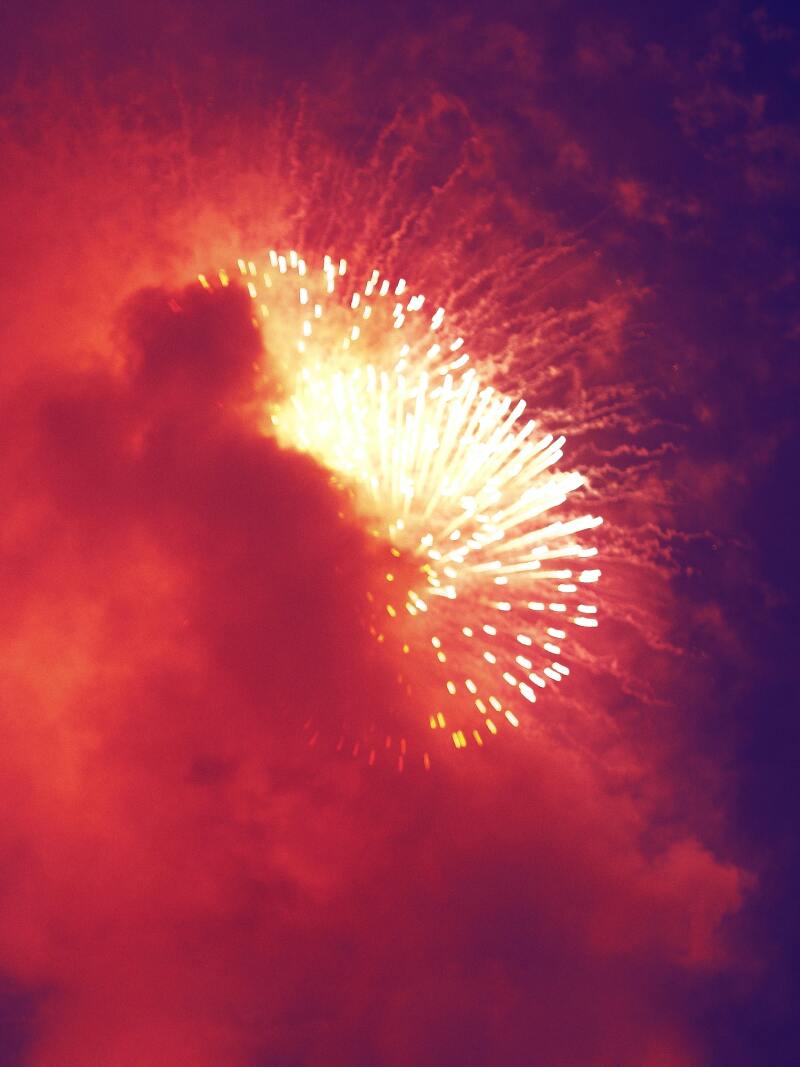What does it look like to be French right now? The question has gripped photographer Christopher Anderson since 2010, the first time he witnessed les joutes nautiques, the French sport of water jousting. Anderson had just started his artist residency in Sète, a port city in the Languedoc region of France. As he watched the matches, a ghost of an idea began to form, inspired by the white of the jousters’ pants and the blue- and red-painted poles they use to push one another into the water; the red of the fireworks that celebrate the festival’s end later joined the mix.
“I had never witnessed the national colors of France on display in this way,” he says, though he has lived in the country on and off since 1999. “It occurred to me that the colors of the flag could be a motif for this project I wanted to do about identity.”
The project, Bleu Blanc Rouge, also touches on Anderson’s own search for identity. His father is Canadian; his mother is American. He grew up in Texas, then roamed a bit before moving to France, where he eventually married a French woman. The couple and their two children spent years in New York before settling in Barcelona.
“I never had the idea of ‘this place is where I belong,’ ” Anderson says. “And now, having children who are half French, who speak French but are growing up in New York and Barcelona—I was thinking a lot about what it would mean to them to be French.”
As France grapples with issues of immigration and populism, what it means to be French is changing. Even the country’s relationship to the flag, which often used to be associated with Far Right nationalism, is evolving. “When I would explain the project to French people,” he says, “they would say, ‘We don’t have the connection to the flag that Americans do.’”
But when Anderson was in Paris for the recent presidential election, he saw something completely different. “People on the Left were displaying the flag in a way I had never seen before,” he says. “I think the French are realizing that national pride doesn’t have to coincide with nationalism.”

Photo by Christopher Anderson
“When I took this photo, I was standing by myself on the marina in Sète on the last day of the jousting festival. I’d already had a couple of glasses of wine and was not expecting to take any more pictures that day. I was just enjoying the moment of being alone, and yet having this weird communal moment with people—we were all experiencing these fireworks. I was thinking of the fourth of July, but of course, that day doesn’t have the same meaning in France.”

Photo by Christopher Anderson
“I would call this sport an interesting metaphor for modern French identity. Les joutes nautiques have their roots in the Crusades. People in the south of France have played it for centuries. Now, you’ll find immigrants participating—people who emigrated from North Africa, dressed in this traditional French costume. What it means to be French today is very different from what it meant 100 years ago.”

Photo Christopher Anderson
“When I started this project, I put an ad in Sète’s local paper that I was looking for people to photograph. I wanted to do portraits on red and blue backgrounds—and it just so happened that the apartment I was in had a cool, blue hallway. This woman came to interview me for the paper, I think because she wanted to write about the experience of having her photo taken. I see her nervousness in this photo, which is part of what makes it interesting.”

Photo by Christopher Anderson
A splash made by a falling jouster in Sète spoke to something universal, says Anderson. “Without getting too touchy-feely about it, water is essential to being human, so it’s an obvious theme when it comes to connecting and belonging.”

FRANCE. Sete. 2011. Portraits of people.
Photo by Christopher Anderson
The portrait of a local artist’s bruise, known as un bleu in French, speaks to the “fragile nature of flesh and the idea that color is literally skin deep.”

Photo by Christopher Anderson
And the image of a woman in bed, looking up at the camera from white sheets? It’s a shot of Marion Durand, Anderson’s wife. “She’s the reason I went to France in the first place—and the reason I stayed.”











